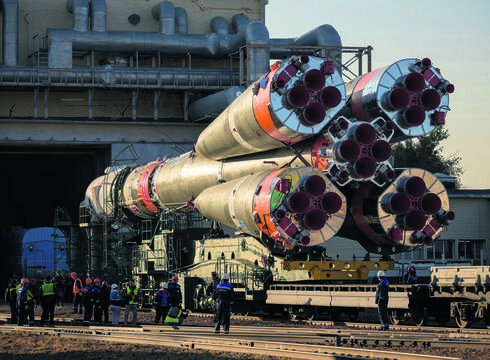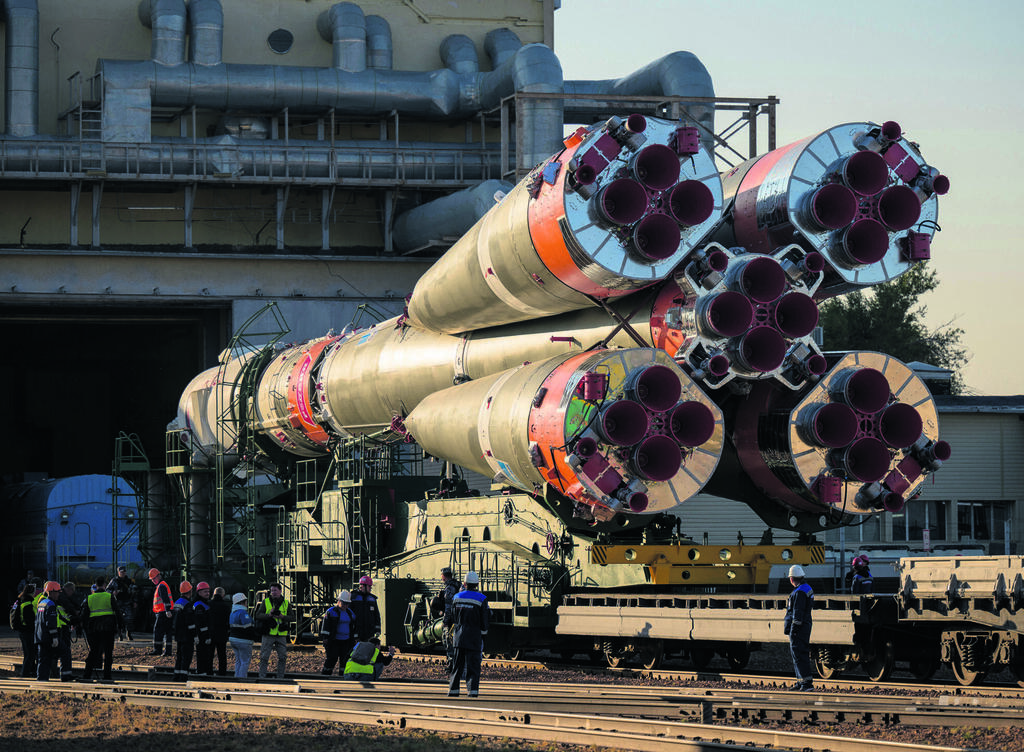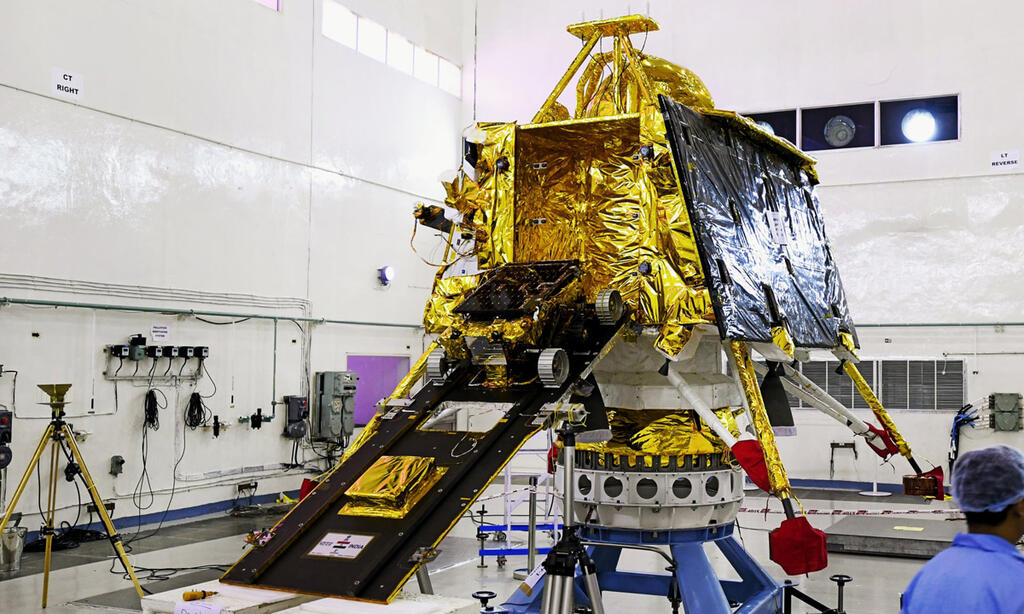
To infinity and beyond: US and China battling for space supremacy, while India and Japan eye bigger roles
The leading countries in space exploration spending are the United States, followed by China, Japan, and France. India, the most recent addition to the group of nations that have landed on the Moon, ranks seventh but is expected to make significant progress
The global space industry continues to grow rapidly, despite the pressure of inflation on the world economy. According to a report from the Space Foundation published in July, the space economy grew by 8% last year to $546 billion, representing a 91% increase over the past decade.
The leading countries in space exploration spending are the United States, followed by China, Japan, and France. India, the most recent addition to the group of nations that have landed on the Moon, ranks seventh but is expected to make significant progress.
"The report anticipates continued growth in the space industry, and based on a conservative estimate, we believe its value will approach $800 billion within five years," writes Thomas Doram, Vice President of the Space Foundation. In 2022, commercial space industry revenues were responsible for the majority of space economy revenues at 78%. Particularly rapid growth was observed in the communications sector due to increased demand for broadband services for satellites. This sector grew by 17% last year, reaching $28 billion, and launch services also saw a sharp increase of 35%.
The US: The leading space superpower
While the United States has maintained a significant lead in government spending in space, the percentage of the federal budget allocated towards space has declined in recent years. In 1966, NASA's expenditures accounted for about 4.5% of the federal budget, while in recent years, it has gone down to 0.5%. By comparison, the United States' defense budget accounts for about 20% of the total budget.
In 2021, Congress allocated $23 billion to NASA, a 3% increase from the previous year. Historically, about 90% of NASA's budget flowed to private contractors, primarily for the design and production of spacecraft and rockets, while NASA oversaw the missions and operated the equipment. Today, private entities often handle the missions themselves, such as SpaceX and Orbital Sciences.
In practice, most major private space companies operate in the United States, led by Boeing, SpaceX, and Blue Origin, which allows the United States to maintain a key role in rocket development, satellite deployment, and other space-related activities. NASA has formed partnerships with the private sector for its Artemis program, which aims to send four astronauts, including the first woman, Christina Hammock Koch, to the Moon by 2024.
In April 2020, NASA announced that Elon Musk’s SpaceX, Jeff Bezos’ Blue Origin, and Dynetics, based in Alabama, would build the spacecraft that will take astronauts to the Moon in the final stage of the mission. The Biden administration committed to supporting NASA's project, which is expected to cost about $93 billion by 2025.
China: A looming competitor
Last May, China announced its intention to send astronauts to the Moon by 2030 and expand its space station, Tianhe, after adding a third module to the station in November last year. China ranks second after the United States in government spending on space exploration, but their spending is still about one-fifth of the American budget. "China is preparing for a short stay on the moon and human-robotic integrated research," said a senior official from the Chinese space agency when presenting the plan.
China was the third country to successfully land a spacecraft on the moon two decades ago, after the former Soviet Union and the United States. China established its independent space station after being denied access to the International Space Station, largely due to objections from the United States concerning the close ties between China's space program and its military.
China has intensified its competition with the United States, seeking to surpass its achievements. In addition to their respective moon missions, both countries have landed rovers on Mars, and China is planning an asteroid landing mission following in the footsteps of its American rival.
The United States sees China as a threat in space. In January, Bill Nelson, who leads NASA, and is a former astronaut and Florida Senator, warned that China might try to claim ownership of lunar resources. He stated that the competition between the countries is growing, and the next two years will determine who gains the advantage. "We are in a space race," Nelson told Politico. "We need to make sure that they don't land somewhere on the moon under the guise of scientific research and then lay claim to it."
Japan: Forging a path to the moon
Although Japan is among the leading countries in terms of investment in space exploration, it has suffered some high-profile failures along the way. Last year alone, these included a failed moon landing attempt, an engine explosion during a test, and a decision to destroy one of its flagship rockets due to ignition problems. Nevertheless, Japan’s luck may be changing.
Earlier this month, Japan launched a lunar mission with hopes of becoming the fifth country to join the exclusive club after India's successful mission this summer. The Japanese SLIM project is expected to land on the Moon in four to six months. This extended timeline is due to the mission's highly efficient computer systems that minimize fuel consumption.
Japan also aims to collaborate with India on a lunar exploration mission set to launch after 2025. The LUPEX mission is designed to collect data on lunar water with the goal of determining its potential use in sustainable space exploration missions. However, Japan's most significant contribution in the field may come through its involvement in the American Artemis program, which seeks to return astronauts to the Moon. In November last year, Tokyo signed an agreement with Washington that opens the way for Japanese astronauts to be stationed at the future research base on the Moon. The U.S.-Japanese partnership underscores their geostrategic rivalry with China.
India: The newcomer
India may not be ranked among the top five nations in terms of government spending on space exploration, but the successful landing of Chandrayaan-3 near the Moon's south pole in August has elevated its status in the space race. This lunar landing, four years after the crash of Chandrayaan-2, is expected to give a significant boost to India's space industry, valued at around $8 billion (approximately 2% of the global space economy). Its recent annual growth rate of 4% outpaces that of most other nations in the field, and forecasts suggest that it could reach $40 billion by 2040. These estimates are likely to change following the historic mission's success.
India aspires to follow NASA's lead and open the space sector to private investments. It has particularly excelled at launching satellites, with 381 foreign satellites for 34 countries launched since 1999, generating $279 million in revenue. "Sectors like aviation, space, and defense will now receive a boost," said Moksh Kothari, Director of AUM Capital, in the wake of Chandrayaan-3's landing. "In India, there are about 140 startups in the space sector. These companies will attract a lot of investment after the success of this mission. Government funding in the field is also expected to increase, providing a significant impetus to the Indian economy."















